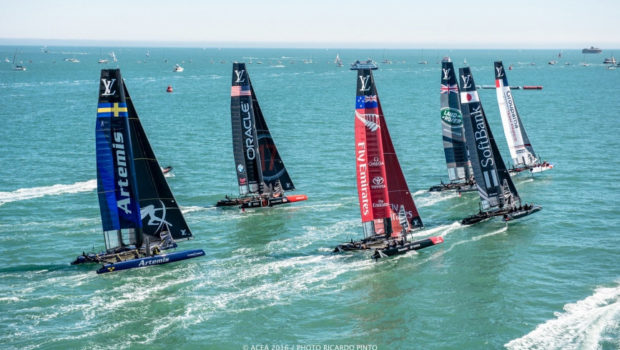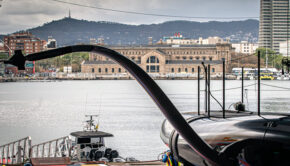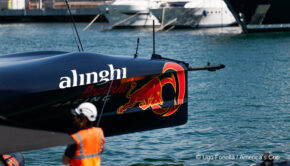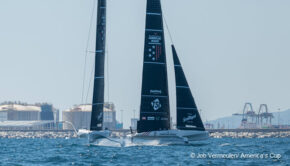America’s Cup: The Multihull Era
Published on October 26th, 2016
In the short time the America’s Cup has shifted to multihulls, rule makers and boat designers have been kept busy with the multitude of boat sizes and styles that have been conceived.
As the America’s Cup marched toward its 34th edition in 2013, we first saw the one design AC45 that was used in the America’s Cup World Series. These non-foiling boats were soon also used outside of competition as teams explored the realm of foiling configurations.
When the AC72s emerged, originally intended to be non-foiling multihulls for the America’s Cup competition, we saw how the clever people out-thought the class rule to get airborne. The sight of these beasts flying across San Francisco Bay was a game changer.
But the AC72 was deemed too much: too expensive, too dangerous, and just bigger than needed. It was decided to downsize to 62 feet for the 35th America’s Cup… on paper. While rulesmakers and designers explored this new size, it was discovered on the water that a pimped out AC45 was hitting or exceeding the performance numbers seen previously from the AC72. It was an awakening moment.
Where are we now? There are three more types of boats which range from the AC45F used in the America’s Cup World Series, the test boats being used for design development, and the America’s Cup Class (ACC) boats that will race in May and June 2017.
The AC45F (F for Foiling) is a one-design, foiling, wing-sailed catamaran that is an evolution of the AC45. Compared to an ACC boat, the AC45F is relatively simple and as a one design yacht, all of the boats are identical.
For 2017, each team must design and build it’s own America’s Cup Class (ACC) boat. These boats are 15-metres long (just over 49 feet) and are built to a design rule, but that rule allows designers and engineers to express their creativity in their designs. All racing in 2017, from the America’s Cup Qualifiers to the America’s Cup Match will be match racing in ACC boats.
The AC45S (or AC45T as some teams call them) is the bridge between the AC45F and the ACC boats. The teams are using these to test ideas, validate assumptions, and practice racing in a boat that closely approximates the ACC boats. The AC45S boats will never engage in ‘official’ racing and some teams have one of these boats while some have built more for testing and training purposes. The hulls for the AC45S boats must be identical to AC45F hull lengths (45ft), but otherwise, as these boats will never race, teams have a lot of flexibility in the systems they can use on board.
In basic terms, that’s it for the 35th America’s Cup. From AC45F to AC45S to ACC, the development is clear, but what is yet to be seen is just how fast the ACC boats will be. We will begin to learn that when they are first allowed to be launched in late December.
Source: ACEA, Scuttlebutt









 We’ll keep your information safe.
We’ll keep your information safe.